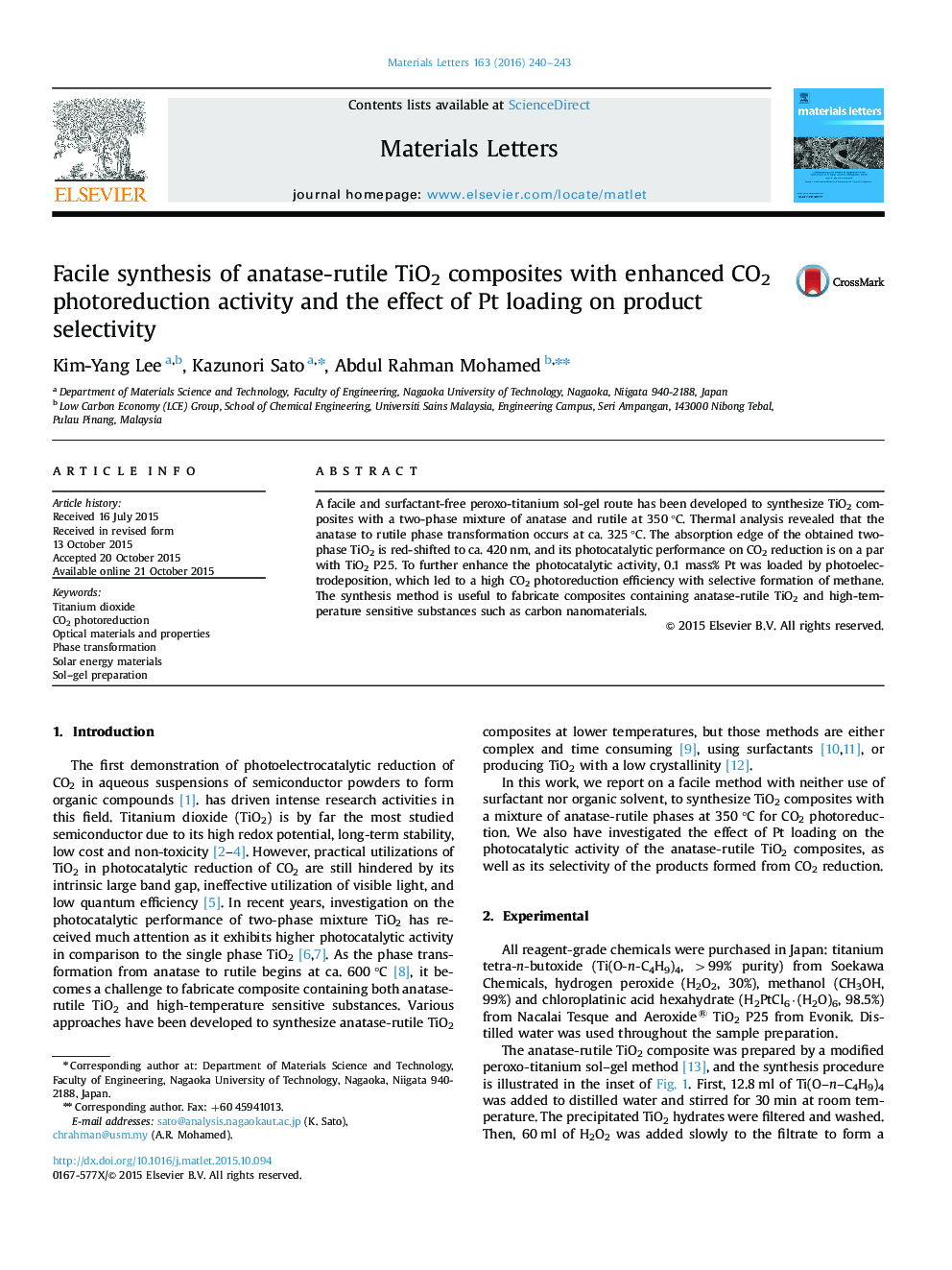| Article ID | Journal | Published Year | Pages | File Type |
|---|---|---|---|---|
| 1641781 | Materials Letters | 2016 | 4 Pages |
•Anatase-rutile TiO2 composite is synthesized by a surfactant-free method at 350oC.•The phase transformation from anatase to rutile is discussed.•The absorption edge is red-shifted and the band gap is narrowed.•The composites are tested for CO2 photoreduction.
A facile and surfactant-free peroxo-titanium sol-gel route has been developed to synthesize TiO2 composites with a two-phase mixture of anatase and rutile at 350 °C. Thermal analysis revealed that the anatase to rutile phase transformation occurs at ca. 325 °C. The absorption edge of the obtained two-phase TiO2 is red-shifted to ca. 420 nm, and its photocatalytic performance on CO2 reduction is on a par with TiO2 P25. To further enhance the photocatalytic activity, 0.1 mass% Pt was loaded by photoelectrodeposition, which led to a high CO2 photoreduction efficiency with selective formation of methane. The synthesis method is useful to fabricate composites containing anatase-rutile TiO2 and high-temperature sensitive substances such as carbon nanomaterials.
Graphical abstractFigure optionsDownload full-size imageDownload as PowerPoint slide
